Spring 2015 A publication of the Wildlife Division—Getting Texans Involved
Citizen Science in the City
Dallas. Houston. El Paso. Not locations we usually associate with nature, yet Texans from these communities are making significant contributions toward a strong future for Texas wildlife everyday. Through programs like the Texas Nature Trackers, iNaturalist.org and the Texas Master Naturalists Program, people from all across the state are tracking the natural resources of Texas and helping our scientists to better understand and protect these same resources. Without the help of these thousands of volunteers, we could not hope to monitor hummingbirds, Whooping Cranes, horned lizards or urban prairies, to the extent that we do. And these same volunteers have been the source of information on some of the occurrences of invasive species in Texas. This newsletter looks at these volunteer efforts and how they have contributed to conservation in urban areas.
How Can I Help Texas Wildlife?
The challenges facing wildlife management in Texas are many - invasive exotic species, urbanization and habitat loss, competing demands for water resulting in conflict between bottom land habitat and water for towns and communities etc. These demands are coming at a time when Texas' population is rapidly growing but the proportion of that population that contributes to the largest portion of the non-game wildlife funding is shrinking. Some have been asking how they can help.
The three license plates above are now available to those wanting to support wildlife conservation in Texas. Costing just $30 extra each year, Texans who choose to purchase these plates are donating $22 of that $30 directly to "on the ground" conservation efforts around the state. You can see some of the projects funded by these dollars in our Back Porch feature. So why not purchase a Conservation License Plate and show what drives you?
Saving the Lawther-Deer Park Prairie Preserve: "Rarest of the Rare"

By Lan Shen
Late summer, 2013, was a time of nail-biting drama in Greater Houston: could the dynamic, daring Jennifer Lorenz, Executive director of the Bayou Land Conservancy (BLC), raise $4 million in six weeks to purchase a 51-acre, never-been-plowed prairie remnant with its eastern meadowlarks, field of lavender blazing stars (Liatris pycnostachya), tiny brilliant red sundews (Drosera brevifolia), and crawfish, and save that land from becoming a housing development? How Jennifer achieved the fastest fundraising in Texas conservation history has been reported elsewhere. This story is about the before-how to preserve and maintain a prairie.

Dallas-Fort Worth Area Residents Participating in Study of Urban Bobcats
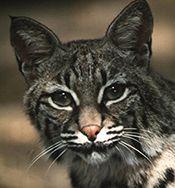
By Derek Broman
Bobcats viewed popping out of storm drains, lounging poolside or chasing Muscovy ducks on golf courses? These observations are becoming quite common in the Dallas-Fort Worth Metroplex (DFW) and they are of great interest to the TPWD DFW Urban Wildlife Office. Why? That office is currently involved in a collaborative urban bobcat study and public sightings of bobcats are needed to assess study findings. In order to meet this need, DFW Urban Wildlife Biologists created a project on the online app "iNaturalist.org" called "DFW Carnivores" to serve as a medium for collecting public observations of bobcats and other carnivores in DFW. The project was created in September 2013, and the number of contributions has more than doubled in the past year, from 80 bobcats (250 total carnivore observations) in February 2014 to over 200 bobcats (590 total carnivore observations) in February 2015. One of the great things about using iNaturalist is that most observations are accompanied by a photo, which is helpful in animal identification and important for assessing data quality.

"You Gotta Dance With the One Who Brung Ya"
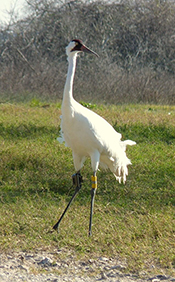
By Chester McConnell, Friends of the Wild Whooper
There is only one wild, self sustaining Whooping Crane population on earth, and it deserves much more attention. This population has slowly increased over the past 60 years while many of their habitats have been destroyed or degraded. Due to the population increase, the "Whoopers" have had to expand their wintering range to private lands miles away from the Aransas National Wildlife Refuge (ANWR) they are usually associated with. Friends of the Wild Whooper (FOTWW) maintains that it is vital to acquire key Whooping Crane habitats along the migration flyway from Saskatchewan, Canada to Texas, with special emphasis in the vicinity of ANWR.

Photo © Sue Kersey
Citizen Science in the City
Contributions to Wildlife Management
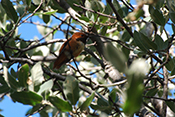
By Mark Klym
Can citizen science really make a difference? How reliable can data from the general public be? How can I know that the data you have from volunteers is accurate? These are just a few of the questions that are asked when science begins exploring the use of volunteers and their collected data in research projects.

Back Porch
By Richard Heilbrun
I've never seen a hummingbird stuck to a bumper, but I want to. Yesterday, I saw a horned lizard on a family sedan, and I can't wait to see a rattlesnake hanging from a motorcycle. I'm talking of course about the new Conservation License Plates launched in March by the Wildlife Diversity Program of Texas Parks and Wildlife Department. Last fall, the Wildlife Diversity Program revealed six new plate designs.

Did You Know?
- Did you know that grasslands were once widespread in west Texas?
- Did you know that Texas is home to three species of horned lizards?
- Did you know that beetles are now being used to help control salt cedar in Texas?
- Did you know that the Desert Bighorn Sheep population in Texas may be as high as 1100 individuals?
- Did you know that Texas is home to two diverse mountain lion populations?
Wild Stuff!
Help protect native non-game species like the Horned Lizard with the purchase of the Horned Lizard license plate. The cost is just $30*, with $22 going directly to benefit the conservation of wildlife diversity in Texas.
Order online today and get your plate in just two weeks!
*In addition to regular vehicle registration fees.
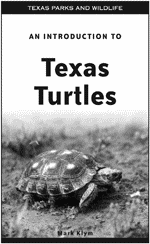
Introduction to Texas
Turtles Booklet
Send an email request to mark.klym@tpwd.state.tx.us
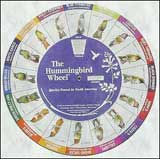
Hummingbird Wheel
This 10" full-color identification wheel is a helpful reference to keep nearby when you watch the hummingbirds. Sixteen hummingbird species are featured, all of which have been documented in Texas! For each bird, the wheel tells you its range in North America, Habitat Type, and distingishing features of both males and females.
To order visit the Texas A&M AgriLife Extension Bookstore.


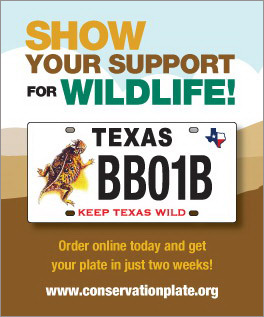
 Texas Parks and Wildlife Department, 4200 Smith School Road, Austin, TX 78744
Texas Parks and Wildlife Department, 4200 Smith School Road, Austin, TX 78744


